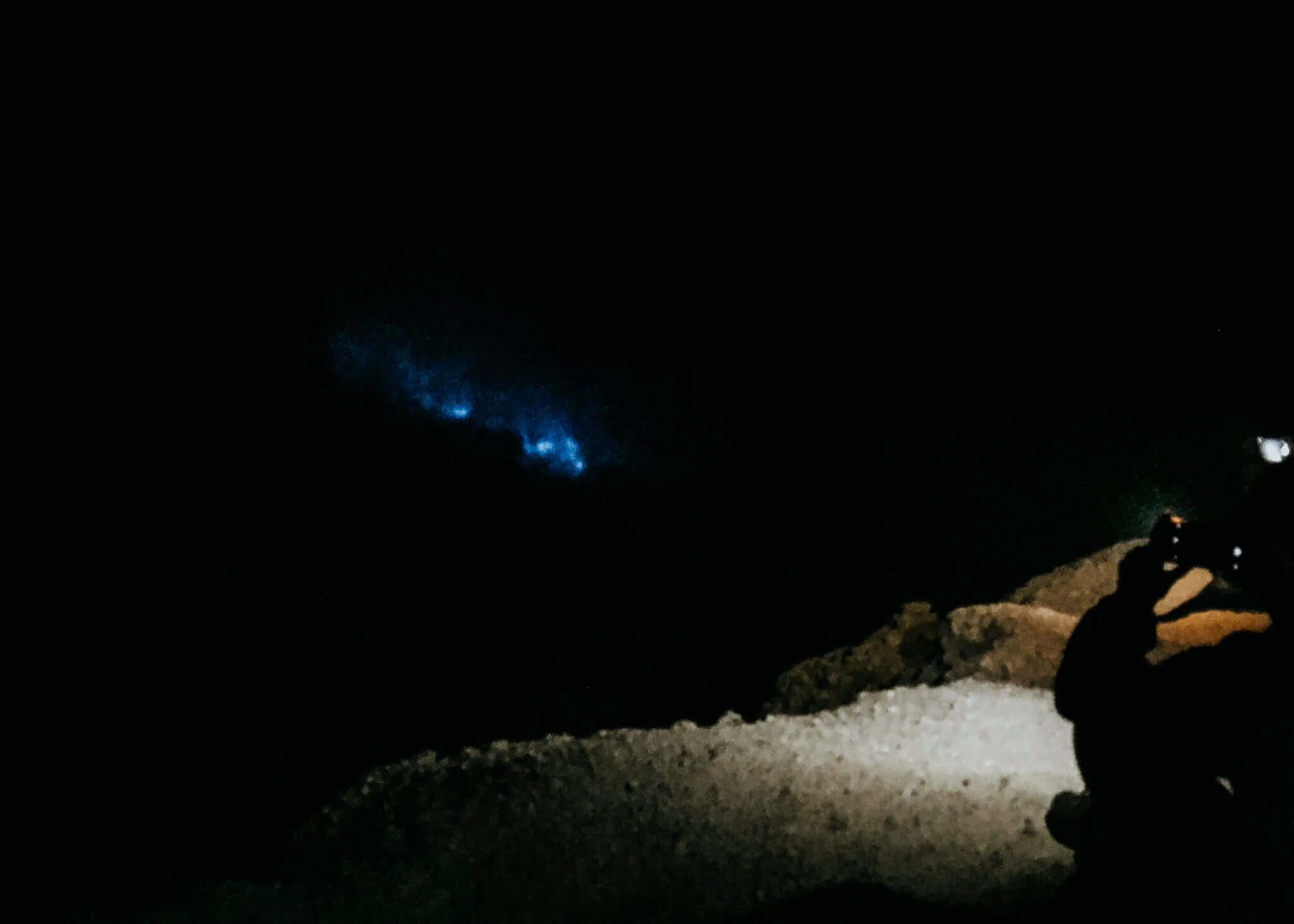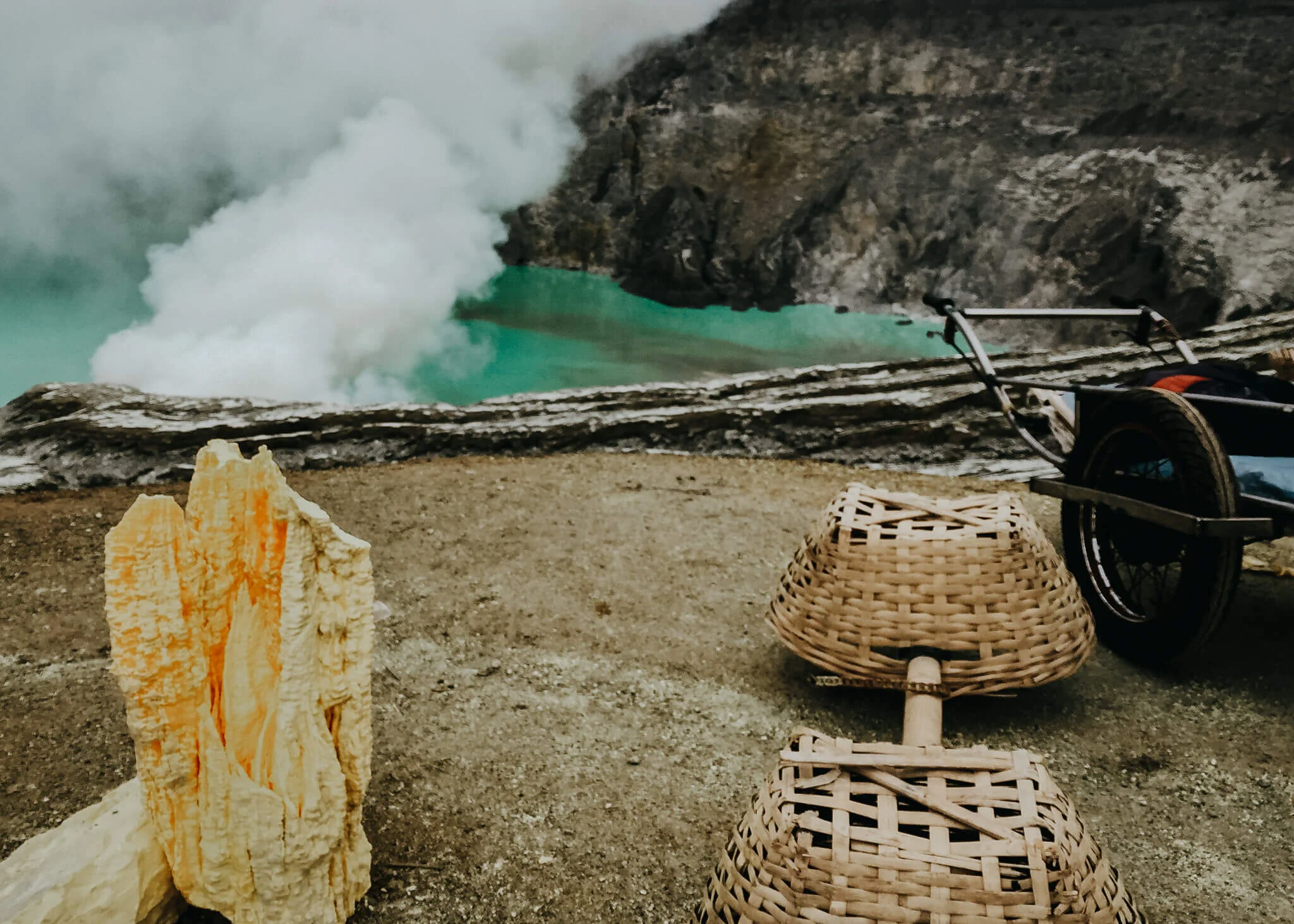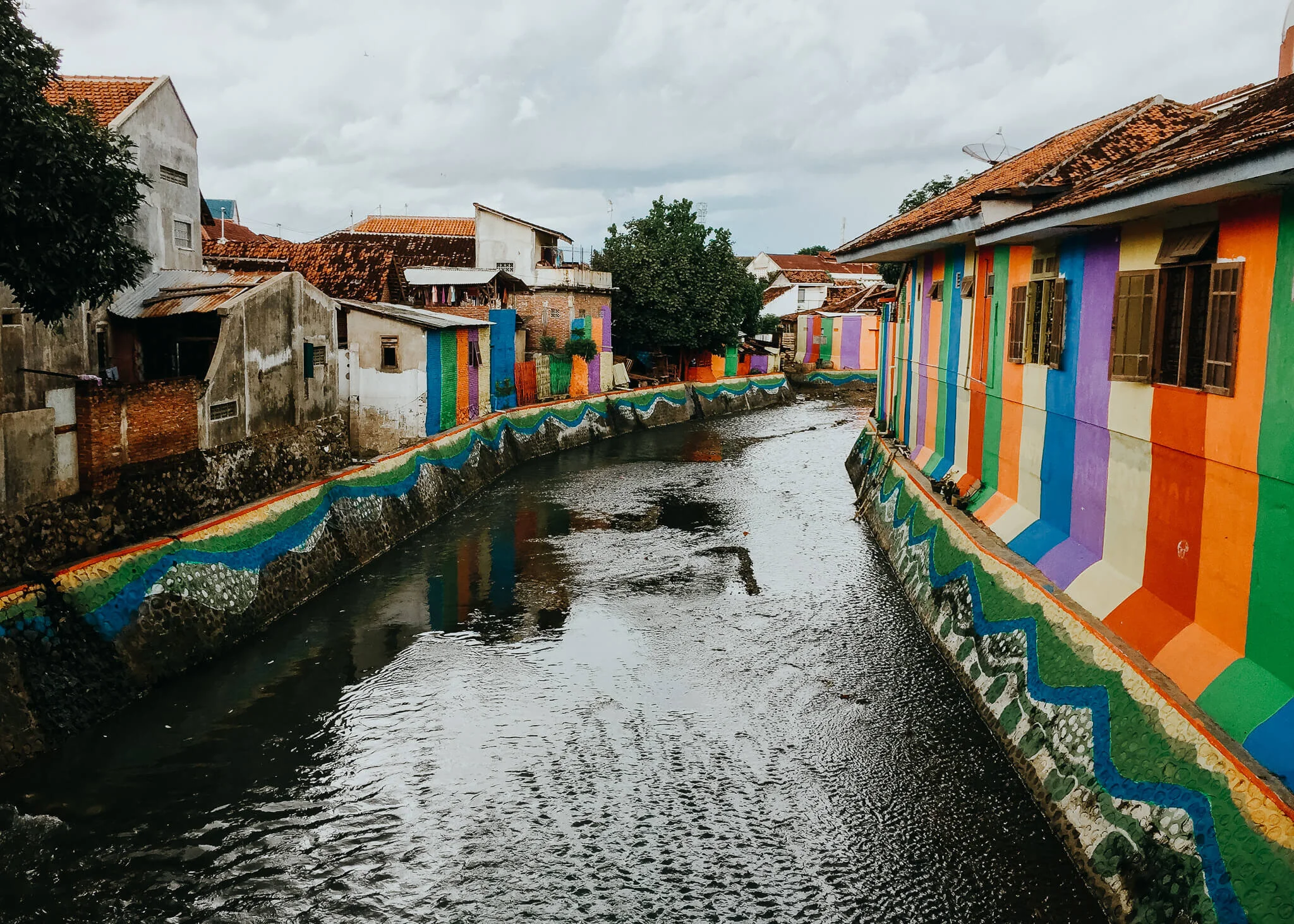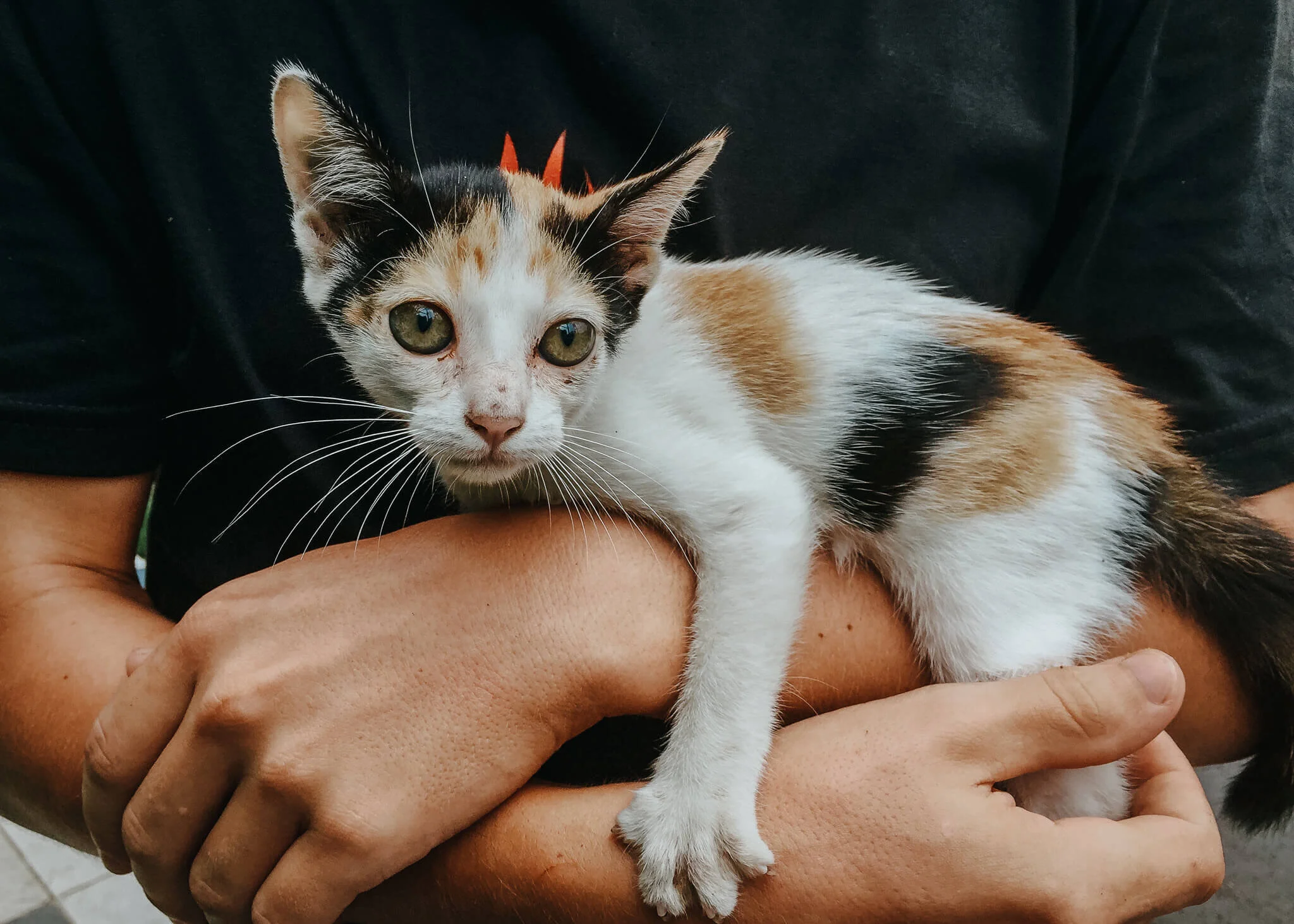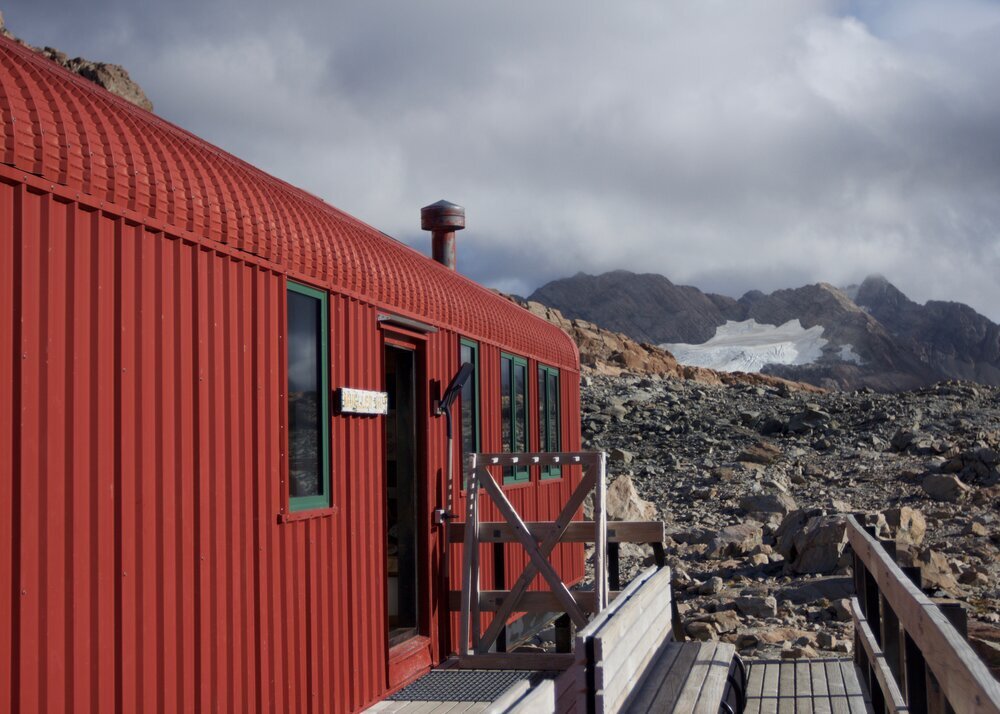Midnight Hike to Kawah Ijen
Kawah Ijen, a volcano in East Java, Indonesia, puts on a spectacular show of dancing blue flames each night. The catch? You must hike into the volcano’s crater to witness them, and only just after midnight.
Our journey began with an eight hour, non-air conditioned bus ride to Banyuwangi, the gateway city to Ijen. While the name “Banyuwangi” is remarkably fun to say, the bus ride was quite the opposite. Let’s just say that if I were told the bus was designed with the sole purpose of transporting ants, I would have believed it. For the first three hours, we had the joy of sitting three people to a two-person seat, but at least I knew the two people on either side of me, so that’s a plus.
To my left was our new friend Matej (the Slovenian superhuman we previously met at Mount Bromo), who had booked a room in Banyuwangi ahead of time - smart man, that one. When we admitted we had done no such prior planning, we decided to follow him like lost puppies in hopes that his accommodation would have an extra room.
Two Americans and a Slovenian Walk Into a Graveyard
Don’t worry, that’s not the start of a really bad joke. Or maybe it is? According to Google Maps, Matej’s homestay was located a mile from the bus stop. Eager to stretch our cramped legs from the ant-bus, we decided to walk there. Now let me begin by saying that Google Maps is a glorious invention, however, I harbor serious doubts on whether their mapmakers have ever actually tried to navigate streets in Southeast Asia. Their maps are notorious for having “streets” where there are only fields and “roads” that are questionable back alleys made of dirt and overflowing with chickens, which is precisely where our misadventure begins.
After walking for a quarter mile on a road, we abruptly stopped at what appeared to be a dead end. Ahead of us was the slightest trace of a trail surrounded by trees; it led somewhere but was certainly no road. We looked down at the map, which indicated we were still going the right way, then back up at the “road,” then back at the map, and finally at each other.
I believe that most people in this situation would say, “hey guys, this doesn’t look right, we should turn around and try another way. Maybe we can call a taxi.” But no. No, no, no. You get three overconfident and desperately tired travelers together who climbed a mountain at 3am earlier that day and suddenly anything is possible.
A few steps into the journey and I hear laughing - a “what the hell are we doing” sort of laugh that is specifically used for situations where the ridiculousness is so high but your persistence level is even higher. Did I mention it was getting dark, too? But we pressed on, determined.
And then we stopped.
As we looked around, we saw that we had casually been walking among tombstones overtaken by grass and shrubs. Google had apparently led us through a decrepit Islamic cemetery this whole time. Because Google Maps also indicated the homestay was right there, we pressed on and silently apologized to the graves for tromping through.
Then we hit a wall.
Literally, there is a wall. And tombstones. And did I mention a wall? While debating if it was appropriate to climb over we are startled to hear a voice. “Are you the Slovenian?” it asked, to which Matej happily said yes, yes he was. Mysterious Wall Man then added: “you used Google Maps, didn’t you?”
Indeed, we did. Is this possibly a common occurrence for you, sir?
“There should only be one Slovenian man,” he continued to say, “but I hear other people…”
We explained that we hadn’t made a reservation but hoped there was an extra room available for the night. Mind you, we are still separated by a wall, in the dark, standing beside a large tombstone and talking to some guy through a large slab of concrete. Finally, I chime in and ask if maybe we could climb the wall and go to the house to discuss the matter further.
“Oh, yes, of course!” he says giggling. And with that, we tossed our bags over the wall, heaved ourselves up, fell into some mud on the other side and a few steps later we were standing on the porch of OsingVacation Homestay.
Not only did he have a have a room but it was one of the most hospitable places we’d ever stayed. Beny (formerly known as Mysterious Wall Man) spoke excellent English, played the ukulele (specializing in the “Happy Birthday” song) and made everything possible. When all the motorbikes in town were sold out he even allowed us to rent his personal bike. Plus, his lovely wife, Diana, greeted us with fresh coconuts spritzed with limes, and since the road to my heart is essentially lined with coconuts, I was one happy camper!
And now… kawah ijen
I’m guessing that most who are reading this came to get information on Kawah Ijen, not to read about late night walks through forgotten cemeteries. Well, my friends, wait no more because that moment has arrived!
Everything had fallen into place and we were ready to begin our hike to Kawah Ijen, the world’s largest acidic volcanic crater. After a little late night nap, we woke up at midnight, put on warm clothes, grabbed our gas masks and hopped on the motorbike. We asked how to get there and Beny’s response was, “go straight.” Thanks, Beny, that’s so helpful, have you ever considered working for Google Maps?
But as it turns out, straight was really the only way to go, save for a few turns to leave our homestay. It is nearly impossible to lose your way - and that’s coming from someone who could make getting lost a lucrative profession.
Hiking into Ijen’s crater
We arrived at the entrance at 2am to begin our trek, which takes an hour or so. Within the darkness, we realized we had quite a crowd for company so if you’re looking for a more serene experience, cross New Years off your list of days to visit.
There are three sections of the walk:
Easy, gentle incline
Stupidly steep
Pleasant, yet smelly, walk
As we approached the edge of the crater, which I can only accurately describe as looking across Mordor, the smell of sulphur grew overwhelming and we doned our gas masks. We continued downward into the crater as fog (or smoke?) enveloped us within the darkness. Soon it became impossible to tell where the mountain walls ended and the sky began.
Along the way we passed local miners carrying 150-pound loads of yellow sulphur rocks that they balance in woven baskets across their shoulders. Most of the men wear flip-flops and work without gas masks, going into the crater to retrieve sulphur 2-3 times a night to make approximately $13 for the day. These men often only live into their fifties because the toxic fumes eventually take their toll, yet they do what they need to in order to make a living. We noticed many tourists oblivious to miners trying to get by so if you hike here, always give miners the right of way. As visitors, we are here for enjoyment; for miners, Ijen is their place of work.
Eventually we made it to the bottom and were face-to-face with the elusive blue flames that we were so eager to see dance in the night. Aside from “oh my” and “woah,” the scene left me without words. I really don’t know how to describe it except as an otherworldly sight that needs to be more than just seen - it must truly be experienced. Sure, you can see pictures of it (including my horrible capture of it above) but what made it special was sitting among lava-formed rocks with clunky gas masks on while witnessing a sight that only happens in this one place in the world.
So what’s the science behind it exactly? Despite popular belief, the blue flames are not some super fancy lava flow but are actually sulphur gases combusting at high temperatures (as in literally 1000° F). When they reach the air they explode into flames, a phenomenon that occurs all day long but can only be seen by our eyes at night. When the gas cools, it leaves sulphur around the lake, which owes its bright green/blue color to predominately hydrogen chloride. When the sulphur cools and hardens, the miners break it apart and carry it back to sell.
With only a two hour time window to see the flames, we emerged from Mordor around 5 am and waited for the sun to rise. It was incredible to see the black hole we just climbed out of become illuminated by the sun to reveal a fierce turquoise lake. After sunrise, we navigated the crowds and sulphur baskets to make our way back to Banyuwangi for a much-needed breakfast.
Banyuwangi
Is there much to do in this town? No. But it sure is fun to say the word “Banyuwangi” and so why not explore it a little? We stumbled on a river of sorts lined with colorfully painted houses, ate lots of nasi goreng (of course) and even made friends with a little street cat.
Overall, if you choose not to hang out, you won’t miss much. Most opt to continue their journey west to Mount Bromo, east to Bali, or north back to the airport in Suryabaya. If you do stick around, check out Jagir Waterfall (which is on the way back to town from Ijen) and go to the beach at Pantai Cemara or Pantai Boom. Or just eat rice and pet cats, I recommend that, too.
KAWAH IJEN CHEATSHEET
where is it?
Banyuwangi, East Java, Indonesia
entrance fee
100k IDR / $7 USD weekdays
150k IDR / $11 USD weekends
Transportation
Ask your accommodations for organized trips or rent a scooter if comfortable driving at night (Motorbike: 60k IDR / $4.50 USD; Gas: 20k IDR / $1.50 USD).
What To Bring
Headlamp, gas mask (25,000 IDR / $2 USD), jacket, snacks
Where to Stay
Budget/Authentic: OsingVacation Homestay ($9 USD/night)
Moderate/In City: Hotel Blambangan ($25 USD/night)
Upscale/Remote: Jiwa Jawa Ijen ($90 USD/night)
#1 Tip to not be an asshole
Please, for the love of all things good and holy, give the miners the right of way, especially if they are carrying a load of sulphur up. You are in their place of work for amusement while they are out there trying to survive. Courtesy and respect go a long way.








